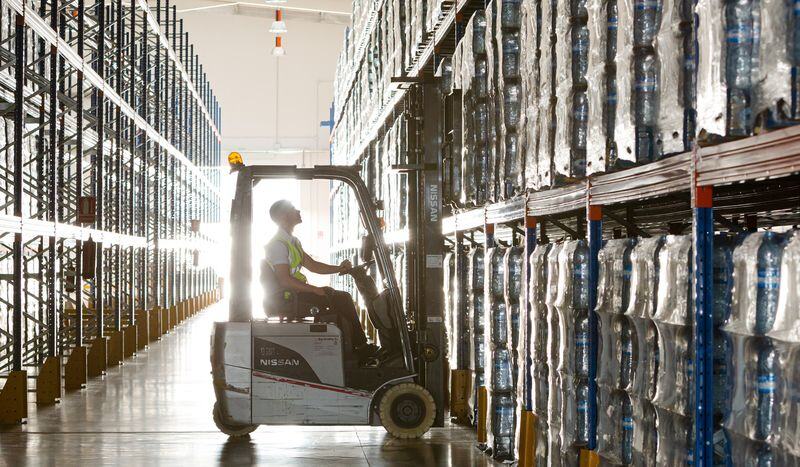How to Create Down Cycle Agility with On-Demand Labor
You’ve been there before: volume has suddenly dropped off a cliff, after months of hiring staff to meet a big surge. You’re left with more employees than you have the work for, and it’s eating a hole in your margins. The situation might be bad enough that you have to let people go.
At Veryable, we understand that nobody wants to be in this situation. We provide an on-demand labor marketplace that connects businesses to workers only when they need them, and we’ve seen that on-demand labor can solve the situation outlined above.
In this article, you’ll learn how you can use on-demand labor to gain down cycle agility.
What is down cycle agility?
Down cycle agility is the ability to respond quickly to a drop in demand. Another way of saying it is that down cycle agility is being able to stop the bleeding before your business is on death’s door.
This means adjusting your costs and operations in response to lower order volumes. Reorienting yourself could mean lowering your headcount, shutting down a section of your operation, or shifting attention to other business priorities.
What is on-demand labor?
On-demand labor is a model that connects businesses to workers only when their work is needed. With access to labor on demand, you can maintain less full-time employees and still meet demand by quickly contracting qualified workers when demand rises. This empowers your business to spend less money on guesswork by enabling fast reactions to changes in demand.
How can you use on-demand labor to gain down cycle agility?
There are a few key scenarios where you could use on-demand labor to gain down cycle agility. These include adapting to unforeseen external events, addressing internal disruptions, and level loading.
Adapt to unforeseen external events
Imagine the scenario we mentioned earlier, where demand suddenly drops off a cliff. This could happen in the case of a pandemic, severe weather & natural disasters, or the blockage of the Suez Canal, all of which we’ve seen in the past year.
As you reflect on the impacts of a sudden drop in demand, imagine that you had used on-demand labor to flex your headcount up to meet the increased demand when it first surged.
Because on-demand labor is flexible, as soon as your demand slowed, you would have simply stopped inviting additional workers. This means you would instantly scale down to your usual headcount, matching your costs to your output more precisely.
Address internal disruptions
There are many things that happen in a facility that cause disruptions within your own four walls. Necessary things like maintenance, repair, and quality assurance can all disrupt your flow. And there are unpredictable disruptions internally as well, such as defects in production or issues with employees.
Instead of having your hands tied during your busiest season because you’re overstaffed when production stops, you could dial back the flexible extension of your workforce you’ve created with on-demand labor.
If operations have to pause for maintenance or quality assurance, you just won’t post for additional workers that day. That way you have your minimum headcount in place for the work that’s available, and you might avoid sending your full-time employees home for the day.
Level load across facilities
If you have a network distribution model, on-demand labor will help you scale up and back down at different facilities when you have to shift workload from one place to another.
For example, if you have to move a large order from Houston to Dallas, then instead of moving workers to that facility and paying extra expenses for the month you spend on that project, you could use on-demand labor in addition to your full-time employees in Dallas to handle the project. That way you don’t have to pay travel expenses on top of workers’ usual wages to get them to Dallas from Houston.
If you use on-demand labor across your network, you can easily flex each facility up and down as needed to enable you to level your load without incurring additional labor costs in the form of underutilization or travel expenses.
Example: achieving down cycle agility during the onset of the pandemic using on-demand labor
One company using Veryable in Texas to find on-demand labor was in the middle of resurgent demand for its products. Then, the pandemic brought the country to a halt seemingly overnight.
During all this, the company was able to scale down instantly. Because it had already been using on-demand labor to meet higher demand than usual, it simply stopped inviting those additional workers.
Then, as the supply chain recovered, the company scaled back up with ease by inviting on-demand workers into its operations again.

This company is no stranger to on-demand labor, and this is just one instance of when it avoided under- or over-utilization of its labor capacity by flexing its headcount with on-demand labor.
Flexing its capacity to match demand precisely has saved this company thousands of dollars and probably saved its operations leaders many headaches over the years.
How to get started with on-demand labor
You can start finding on-demand labor and building up the flexible extension of your workforce today by creating your free business profile or contacting your local office.
Previous Posts
Trump 2.0 Week 13 Recap: Discussing Ongoing Negotiations With Key Trade Partners, A Potential Deal With China On The Horizon, and More
The Future of Manufacturing and Logistics
Create a free business profile today to explore our platform.






